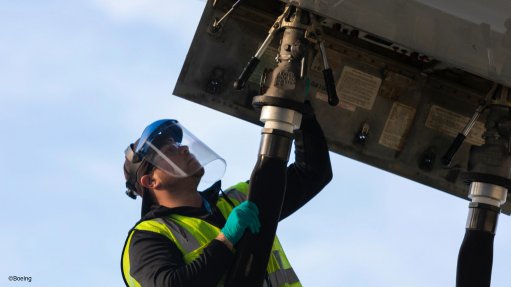Govt should urgently plan for massive cyclone storm damage in SA - Wits researcher
The South African government should begin to urgently plan to deal with the impact of Category 5 storms resulting from an increase in the severity of cyclone activity in the Indian Ocean.
According to Wits University researcher Dr Jennifer Fitchett, these storms are related to the increase in temperatures of the Indian Ocean.
Fitchett's research suggests that more powerful storms (Category 5 or CAT5) will form over southern Africa because of an increase in ocean temperature.
"This study indicates that mean annual sea surface temperatures of 29 °C are associated with the strongest intensity CAT5 tropical cyclones. The region surrounding southern Africa and Madagascar has mean annual sea surface temperatures of 26 °C, so an increase of 3 °C would substantially heighten the risk of high intensity storms," Fitchett told News24.
STORM MEASUREMENT
While she acknowledged that there had been a net decrease in the number of cyclones in the Indian Ocean recently, she pointed out that their severity had increased.
Experts measure storms from Category 1 - which have wind speeds between 119km/h and 153 km/h on the Saffir-Simpson Hurricane Wind Scale - to Category 5 storm whch have wind speeds of 252 km/h or higher.
According to the US National Hurricane Centre, even Category 1 storms will cause damage to power lines and property.
Category 5 storms could destroy walls, roofs, and make an area uninhabitable.
"In the case of Category 5 storms [the government should implement] early warning systems and evacuation plans. The wind speeds, storm surges and rainfall associated with this intensity of storm leaves very little chance of coming out unscathed, regardless of the quality of infrastructure," Fitchett said.
Her research showed that Category 5 storms were not present in the South Indian Ocean before 1994, but had now become more frequent.
While experts are not keen to link storm formation directly to climate change, many storms are showing increased intensity.
Typhoon Mangkhut was responsible for several deaths across the Philippines and China in September, and the head of the Japan 2020 Olympic Committee expressed fears of extreme summer heat and typhoons for the 2020 Olympics in Tokyo.
In October, News24 reported that hail and flash floods had impacted Gauteng because of a thunderstorm which affected the province.
RAINFALL
Despite the impact of strong storms, Fitchett said that it may not have much of an impact on long-term rainfall for SA, which is a water scarce country.
"Tropical cyclones are very short-lived events (less than a week in duration mostly), but are associated with extremely high rainfall in a short space of time.
"There is also some research being done that indicates that an increased intensity of these storms may have longer lasting impacts on the tropical easterly wave.
"So, increased mean annual rainfall for the year of the storm, possible longer term impacts on regional rainfall, but will not have as profound an impact on regional rainfall patterns as El Niño or the passage of mid-latitude cyclones."
According to the UN Intergovernmental Panel on Climate Change (IPCC), between 1880 and 2012, the average global temperature increased by 0.85 °C.
Global sea levels rose 19cm due to warming because of expansion and melting ice, the IPCC found.
CLIMATE CHANGE
The IPCC warned in October that global temperatures would need to be limited to 1.5 °C in order to stave off the worst effects of climate change.
"The IPCC report has been warning of an increased frequency and intensity of extreme climatic events for a long time now, so very much in line with their early forecasts, and with each report they warn of the devastation of extreme climate even further," said Fitchett.
She added that, without more "radical measures" on carbon emissions than have been called for in the Paris Agreement, reversing the current trend of climate change would be difficult.
Fitchett is a senior lecturer at the University of the Witwatersrand, specialising in biometeorology research. She has contributed to 36 publications, and most recently authored a chapter in Climate change and tourism research in South Africa: prospects and obstacles for mixed-method approaches .
Comments
Press Office
Announcements
What's On
Subscribe to improve your user experience...
Option 1 (equivalent of R125 a month):
Receive a weekly copy of Creamer Media's Engineering News & Mining Weekly magazine
(print copy for those in South Africa and e-magazine for those outside of South Africa)
Receive daily email newsletters
Access to full search results
Access archive of magazine back copies
Access to Projects in Progress
Access to ONE Research Report of your choice in PDF format
Option 2 (equivalent of R375 a month):
All benefits from Option 1
PLUS
Access to Creamer Media's Research Channel Africa for ALL Research Reports, in PDF format, on various industrial and mining sectors
including Electricity; Water; Energy Transition; Hydrogen; Roads, Rail and Ports; Coal; Gold; Platinum; Battery Metals; etc.
Already a subscriber?
Forgotten your password?
Receive weekly copy of Creamer Media's Engineering News & Mining Weekly magazine (print copy for those in South Africa and e-magazine for those outside of South Africa)
➕
Recieve daily email newsletters
➕
Access to full search results
➕
Access archive of magazine back copies
➕
Access to Projects in Progress
➕
Access to ONE Research Report of your choice in PDF format
RESEARCH CHANNEL AFRICA
R4500 (equivalent of R375 a month)
SUBSCRIBEAll benefits from Option 1
➕
Access to Creamer Media's Research Channel Africa for ALL Research Reports on various industrial and mining sectors, in PDF format, including on:
Electricity
➕
Water
➕
Energy Transition
➕
Hydrogen
➕
Roads, Rail and Ports
➕
Coal
➕
Gold
➕
Platinum
➕
Battery Metals
➕
etc.
Receive all benefits from Option 1 or Option 2 delivered to numerous people at your company
➕
Multiple User names and Passwords for simultaneous log-ins
➕
Intranet integration access to all in your organisation


















